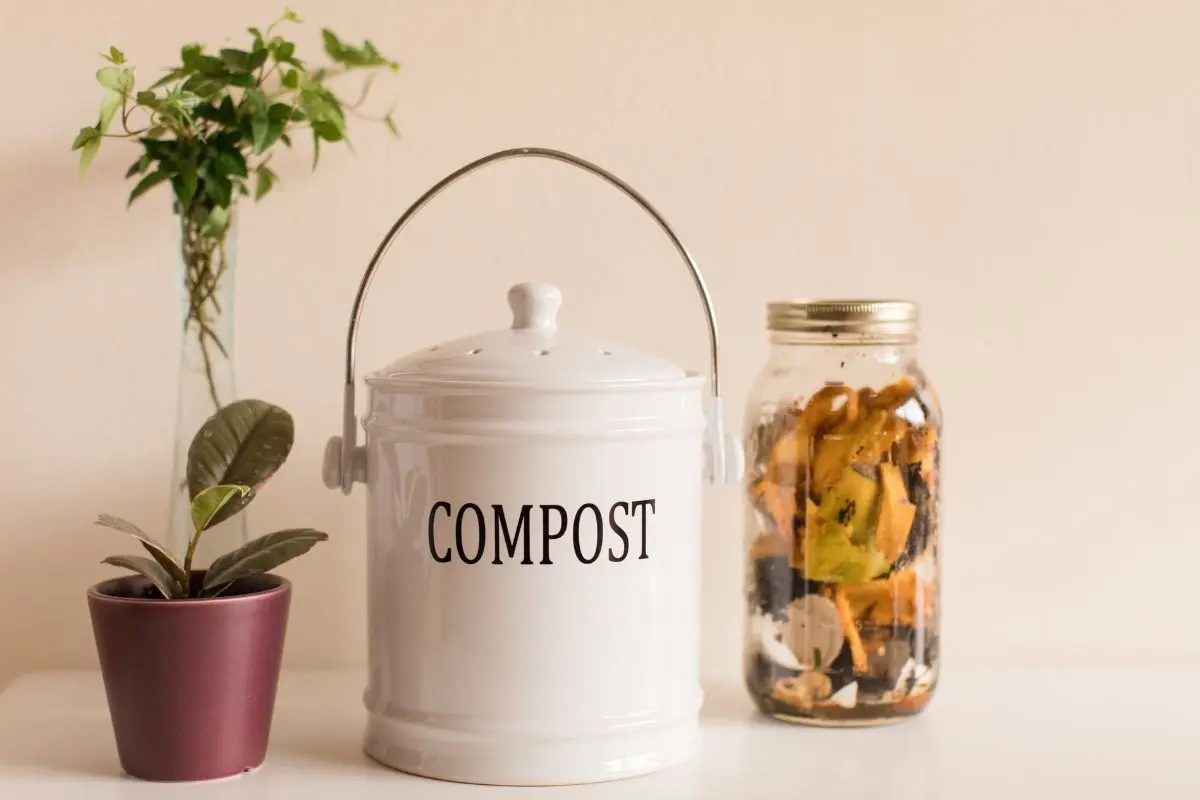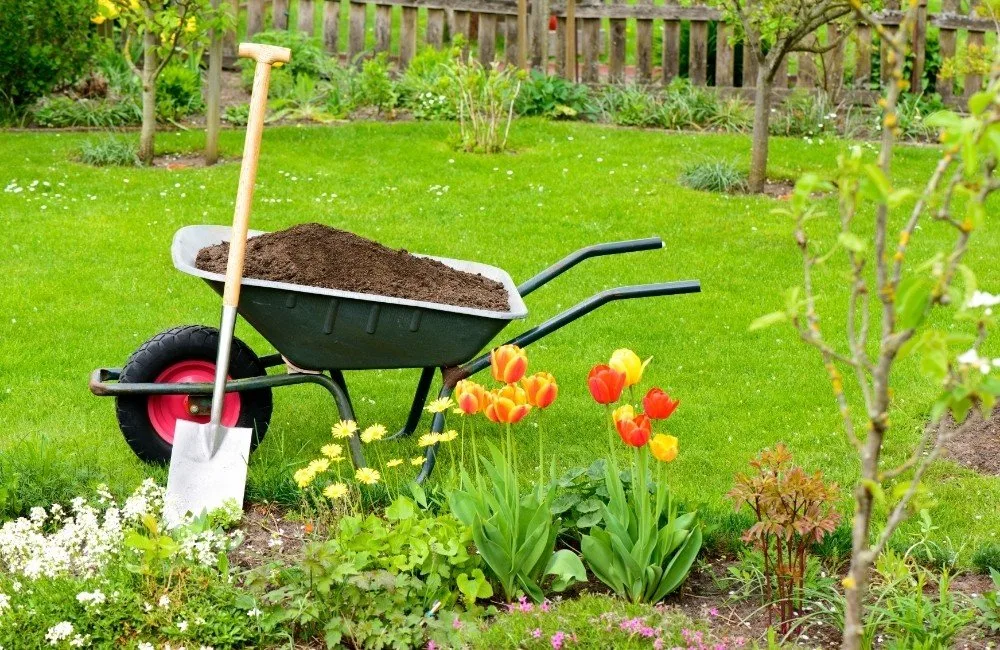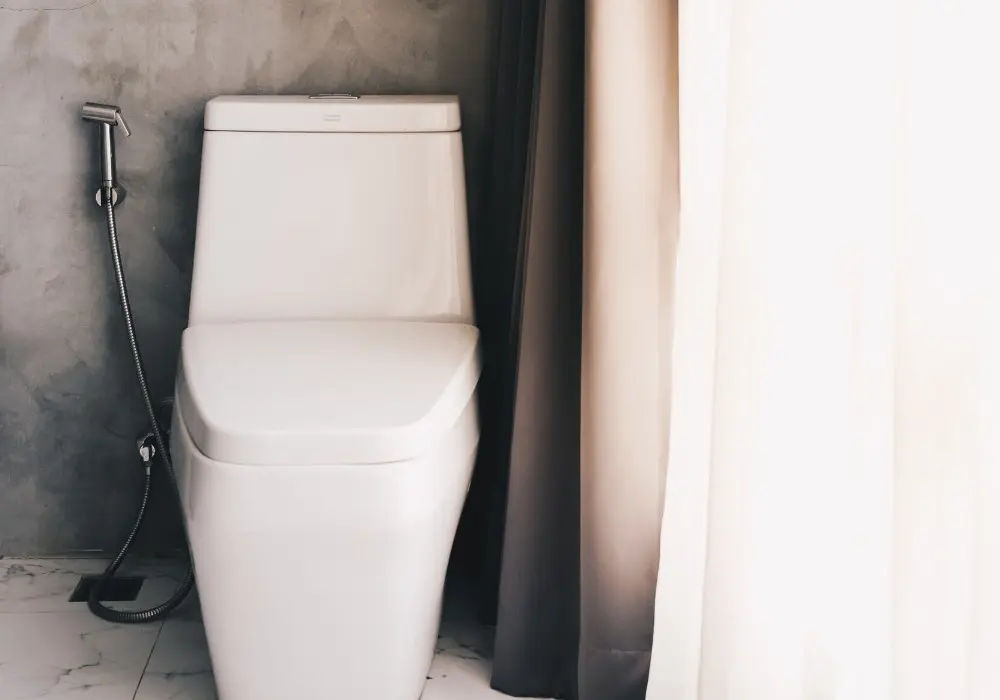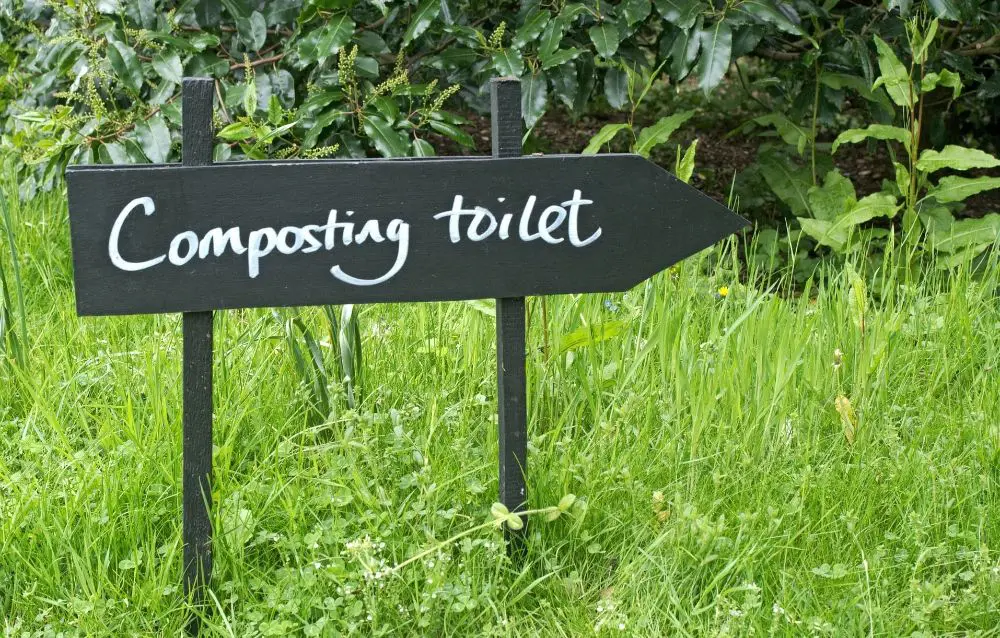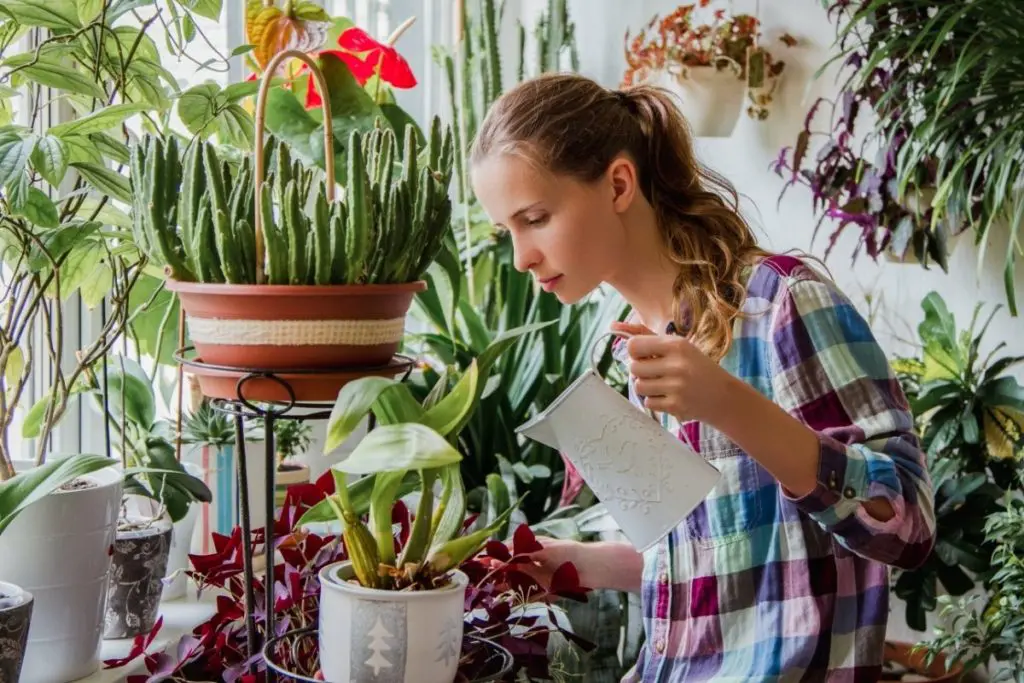We throw away 95% of our kitchen scraps in America when we could be composting them instead. Why does that matter? Every time those scraps end up in a landfill, they generate methane gas, and everytime we produce greenhouse gasses, climate change is accelerated.
So what can I do? As a start, you can reduce the amount of garbage sent to landfills by learning how to compost.
But what if I live in an apartment with no outdoor space? You can still compost! But you’ll need an odorless method, has a limited indoor footprint and is easy to maintain — that’s where this article comes in. We’ve got all the info on how to compost in an apartment.
Getting Started: How to Compost in an Apartment
Before you start composting, you’ll need to consider what services are available to you, whether you want to create nutrient-rich compost for your own houseplants, and how dedicated you are to reducing your carbon footprint.
1. Check to see if your city has a composting, food waste, or yard waste pickup service.
This quick lookup is the first step in any composting journey, and a quick Google search should yield what’s available in your area and will point you in the right direction. Many mid-sized and larger cities have robust food and yard waste curbside collection programs, and even smaller cities may have drop-offs or programs that can handle kitchen and yard waste composting. If you live in a place that offers composting collection as part of your garbage service, you should definitely take advantage of this. And if you don’t, you might even be able to find a private service or local business that offers curbside pickup.
2. Decide whether or not you’d like to end up with usable compost.
If you have many houseplants, a balcony with plants, or even some herbs growing on your windowsill, homemade compost will be incredibly beneficial for them. You may even produce enough compost to use on the landscaping around your apartment building or share with a local community garden or gardener friends! Or, if you don’t have a green thumb and aren’t particularly interested in generating compost, you can stick with collecting your scraps for city composting.
3. Determine the level of effort you’re willing to put into composting.
You may not want to devote time or precious space to more intensive composting, and that’s fine! Simply collecting and removing kitchen scraps from the waste stream has a positive effect. On the other hand, if you’re intrigued by the process and have plenty of plants that would love some homemade compost, you can set up your own veritable vermicomposting factory in a spare closet.
The Two Main Methods of Composting in an Apartment
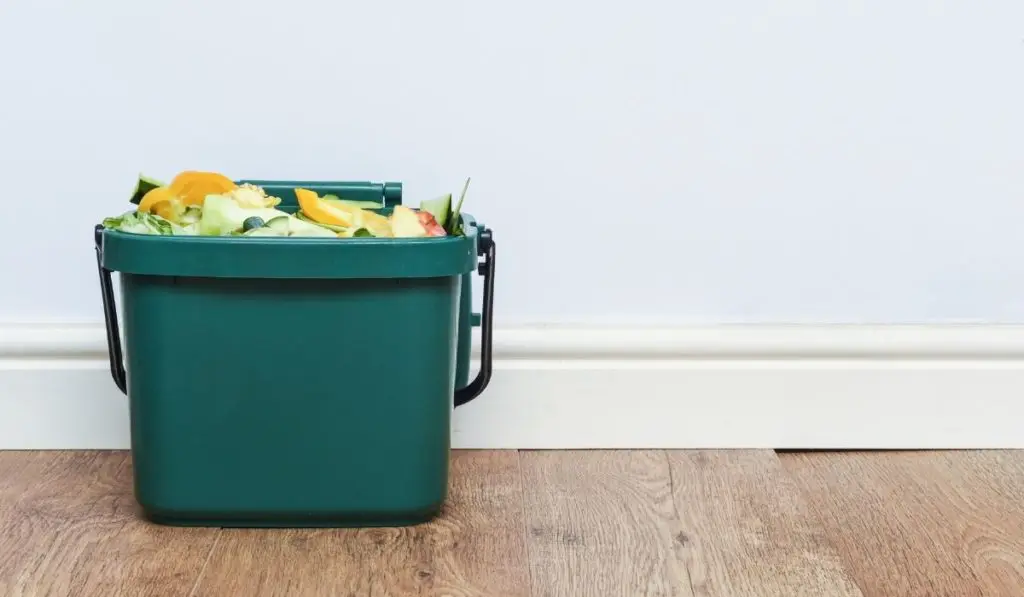
There are two effective methods when it comes to how to compost in an apartment.
1
Method #1: Collect and Dump
The first method for composting in an apartment involves collecting kitchen scraps in a small pail and then periodically emptying it.
Once your pail is full, empty it into either an outdoor compost pile or a municipal yard waste service bin. This first method is technically more of a “collect and dump” strategy than it is composting. The biggest advantage of method one is that it’s an easy and low-maintenance way to recycle kitchen waste responsibly. One thing to note: since you’re handing off your scraps to be composted elsewhere, you won’t produce any compost of your own.
2
Method #2: Creating Compost
If you don’t have a place to deposit your scraps or are interested in physically composting your kitchen waste yourself, consider a food recycler or indoor vermicomposting (more on this later). The biggest payoff of these methods is the rich fertilizer you gain for your plants. The downside is a little more effort and possibly a little more space for your bin.
Home Composting Tools
No matter how you choose to compost, there are a few essential tools to consider.
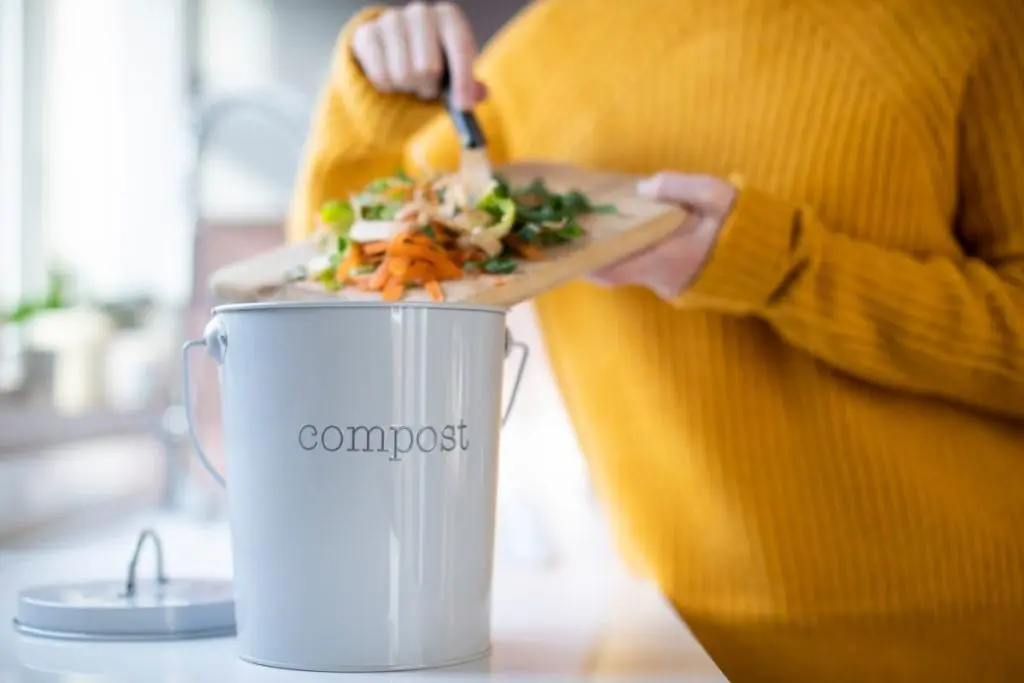
Countertop Bins & Pails
If you’re trying to figure out how to start a compost bin in an apartment, keep it simple initially.
The easiest way to ease into the process is by keeping a small bin in your kitchen. Manufacturers design these little buckets to sit right on your countertop or in a cabinet and provide a quick, convenient place to put all your food scraps as you cook and clean.
Given the increasing popularity of composting at home, there are many compact, attractive compost containers available. Whether you’re looking for something classic, budget, bamboo, extra-large, or sleek and modern, there is a countertop compost bin out there for you.
Once you’ve collected a full bin of scraps, simply remove your (compostable) bag from the bin and deposit it into the yard waste bin in the garbage/recycling area of your apartment building. Or, if you’re lucky enough to have access to an apartment garden area with an outdoor compost pile, you can deposit your kitchen scraps there as well.
Indoor Vermicomposting & Food Recyclers
If you don’t have access to a kitchen or yard waste service or an outdoor compost pile, you still have a few options for composting in an apartment.
1. Worm Bins
Ok, this is the point where we reveal that “vermicomposting” means “composting with worms.” Wait! Stay with us. It’s not as gross as it seems. Worm bins are actually kind of incredible!
Vermicomposting is totally self-contained, odorless, and above all, extremely efficient at breaking down food scraps and producing rich compost. Given the right conditions, these hard-working worms can digest up to a full pound of kitchen scraps in a single day. And after they’ve done their job munching down on scraps, you’ll find rich worm’s compost, known as “castings.” Gardeners prize worm castings, and they are way better than any commercial fertilizer you can find.
Worm bins are also inexpensive to make on your own. There are many good tutorials around the internet, but in a nutshell: if you’ve got a medium-sized plastic container, a drill, some bedding materials, a few common ingredients, and an order of red wigglers, you can get vermicomposting in no time.
You can also buy commercially produced worm bins online if you want something more aesthetically pleasing (and that doesn’t scream: worm bin!). We like this moderately priced small worm bin, or if you have a little more space and budget, you can upgrade to something cool-looking like this modern Worm Farm Composter.
2. Food Recyclers
Despite its many advantages, we know vermicomposting isn’t for everyone. If you want to know how to compost in an apartment without worms (and your budget can stretch a little further), you may want to consider a food recycler.
Yes, this option is an investment, in part because it’s relatively new on the market. But food recyclers are also an incredibly clean, convenient, space-saving way to turn a wide variety of kitchen waste into fertilizer — very quickly.
Vitamix offers a well-reviewed model. There are other brands available, although they tend to be very pricey.
3. Hybrids
A few indoor composting bins are an intermediate step between food scrap collection pail and full composting. These bins have a spigot and require the addition of dry microbial layers that will help break down your kitchen scraps a little further while producing liquid “compost tea.” This fertilizer also referred to as “liquid gold,” is great for houseplants. What’s the downside? This method leaves you with a fair amount of material that users must deposit in an outdoor compost pile or a kitchen waste collection service.
Additional Home Composting Supplies
Once you decide which route your at-home composting will take you, you’ll probably need a few more supplies. In particular:
- Compostable bags. These handy bags make composting a lot tidier and are specially designed to (eventually) break down along with your kitchen scraps.
- Carbon filters. If you use a countertop compost pail that utilizes carbon filters, you can find them cheaply and easily through multiple sources.
- Worms. If you’re going the vermicomposting avenue, you’ll need some new friends to populate your worm bin. Red wigglers are the species most often recommended for vermicomposting. Don’t worry, like most everything else, a neat little colony of worms is a simple Amazon click away.
- Books. And finally, you may want to read up on your new hobby. If that’s the case, there are plenty of home composting books at the ready!
FAQs: How to Compost in an Apartment
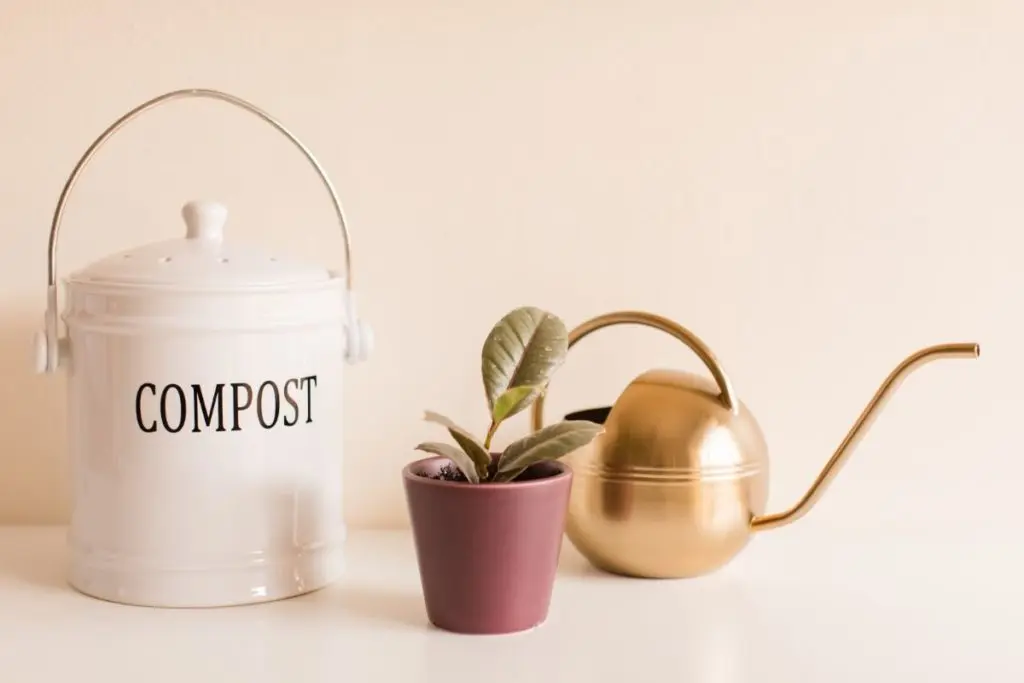
Does it smell bad when you compost at home?
Nope, not unless you’re doing something wrong. Sure, if you have an overly-full container that sits on your kitchen counter for days, it will probably start to get stinky. You can mitigate that by using a carbon filter or emptying it more frequently.
Worms inside my house? Really?
It’s definitely one of those things that seems a little shocking the first time you consider it. But when you learn about the many benefits of vermicomposting, it suddenly becomes shockingly normal. Plus, it’s like having a bunch of tiny, low maintenance pets!
What can you put in your compost bin?
If you’re using a standard countertop compost pail, you’ll want to limit your input to the basics: banana peels, fruit and veggie rinds, ends and skins, eggshells, coffee grounds, and other plant-based scraps.However, if you have a fancier food recycler, you can get away with adding a wider variety of castoffs, including meat, dairy, or even small bones.
If you’re vermicomposting, worms like veggies, fruits, grains, pasta, and worms can also eat certain paper products like coffee filters or napkins. Meat and dairy are more controversial; some experts say in moderation, while others say none at all. One thing is certain: worms don’t love citrus, so avoid orange peels, etc.
We hope you’ve learned how to compost when you live in an apartment, and found the perfect method for your living situation. Whichever way you choose to compost, you’ll be making a positive impact. Happy composting!
Further Reading
